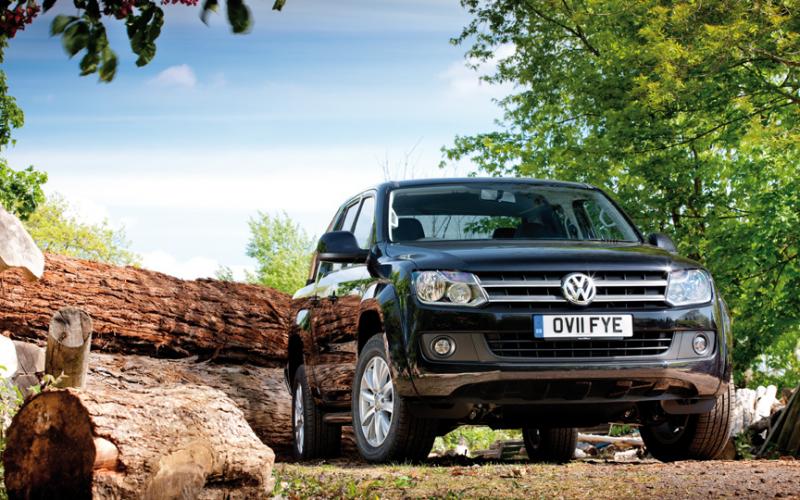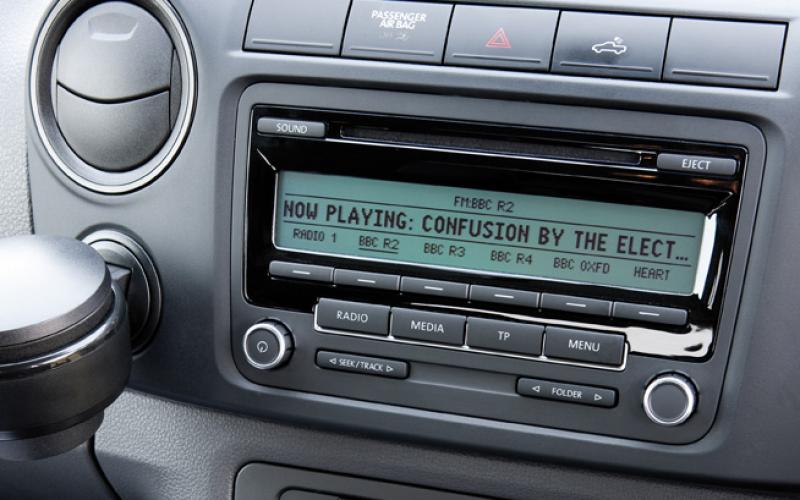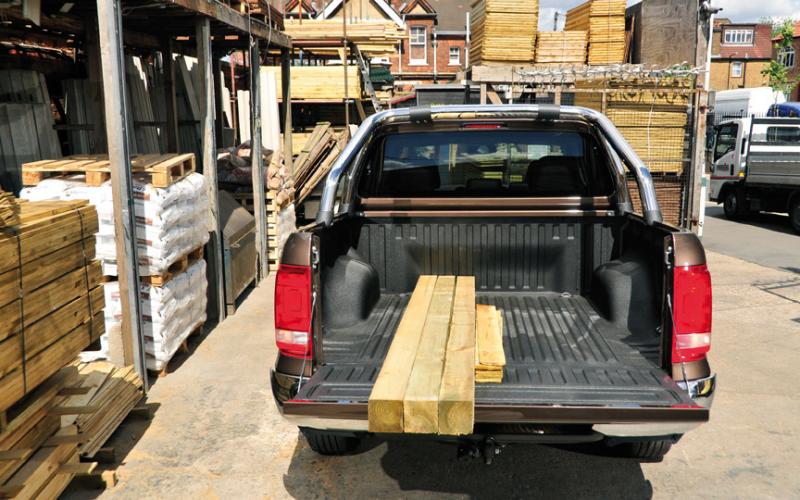Volkswagen Amarok ♦ Vehicle Test ♦
Shaking up the 4x4 double-cab market is not an easy thing to do. It’s not a thing that gets tried very often, either: the manufacturers stay the same from one product cycle to the next, with very few comings or goings to speak of.
Yet despite this, the pick-up market has changed beyond all recognition in the last decade. As recently as 2003, when Isuzu launched the Rodeo, that vehicle’s 3.0-litre engine and automatic gearbox were unimaginably radical. And whereas alloys and air-con were once the height of sophistication on a pick-up, these days it takes a far more upmarket palette of kit to impress people.
One of the most radical things about the Volkswagen Amarok is that it’s a Volkswagen. It’s a unique model, not badge-engineered with anything else, and it represents a dramatic new arrival in a model that hasn’t had any fresh blood for a long time.
What else about it is radical? Well, it only has a 2.0-litre engine, for starters. Actually, make that two 2.0-litre engines. The entry level model in a range of five has a 121bhp unit, with 251lbf.ft from 2000rpm, which returns combined fuel consumption of 37.2mpg and, putting out only 199g/km, can lay claim to being the cleanest pick-up of its kind.
The rest of the range gets a 161bhp version of the same basic engine, in which twin turbos come in sequentially to boost low-rev torque and then high-speed power. Talking of torque, you get 295lbf.ft from 1500rpm; fuel consumption of 36.2mpg and emissions of 206g/km mean that in the real world, it’s scarcely less clean than the single-turbo unit. Both engines are bolted to a six-speed manual gearbox; at present, there’s no auto option.
Something else that qualifies as radical is the range of choices further along the drivetrain. All but the highest-spec Amaroks have part-time four-wheel drive with low range and a locking rear diff, which is standard on the work-spec Startline model and optional further up the range.
Nothing unusual there, but the top I-want-to-be-an-SUV Highline model offers the option of a full-time four-wheel drive system with a Torsen centre diff and a 40:60 front to rear torque split. Brilliant: full-time is definitely the way forward on trucks that are likely to spend a lot of time unladen.
But, and here’s the frustrating bit, this version of the Amarok doesn’t have low box. We can’t say we understand why: it’s not as if there’s any technological reason why the two can’t work together.
Something else you might find frustrating is that the model with full-time four-wheel drive is fitted as standard with ‘comfort’ rear springs. This sounds ideal, considering the fact that pick-ups’ ride is traditionally their Achilles’ heel, but with these in place your payload drops below 1000kg and the taxman starts advancing like a praying mantis.
The good news is that elsewhere, payloads are robustly high. And where it follows the traditional path, the Amarok is a pretty traditional truck, with a ladder chassis and the time-served combination of independent double wishbones up front and a leaf-sprung live rear axle. Throw in the low box and rear locker you’ll find on most models, and you’ve got the basics for a winning truck.
When the Amarok was first introduced to the press this time last year in a sort of Euro-wide sneak preview, we were given to believe that the entry-level model was to be a true work truck with mechanical door locks and window winders, manually adjusted mirrors and a generally utilitarian approach. That might be the case elsewhere in Europe, particularly Mediterranean countries where a truck really is a truck, but as it turns out the most basic Amarok you can get here has remote central locking, electric windows and mirrors – and, if you don’t mind, alloys, air-con and a CD stereo. Basic, it ain’t.
It also scores very highly on the safety front, with twin front, side and curtain airbags should the widely functioned ESP system not be enough to prevent calamity. There’s also a Cat 1 alarm and immobiliser for the other kind of peace of mind.
You might have mixed feelings about some of this if all you want is a truck that’s going to spend its life in the sort of wet, grimy conditions that sooner or later find out even the best protected electrics. But you can’t deny that even at this level, the Amarok is well specced.
Another difference between Britain and the rest of Europe is that instead of 205R16s, the Startline gets 245/70R16 tyres. The alloys go up to 17” on the mid-range Trendline, which also gets cruise, climate, a better stereo and various other bits and pieces. On the Highline, the alloys go up another inch and among other things you get leather, privacy glass and rear parking sensors.
On and off road, something you notice about the Amarok is how light it feels on its feet. Typically poor British road surfaces make it shudder a lot at the back, but the front doesn’t crash through potholes and it’s never less than easy and relaxed to steer. Overall, there’s a level of agility there that defies its size.
The 2.0-litre engine may be the smallest in its class, but it pulls very well and allows you to make progress over rough terrain without needing to go in hard with the throttle. Getting moving in the first place means being gentle with the clutch, but once up and running it pulls well both in gear and through the box.
It feels big, with a tremendously high-up driving position, but that steering and a slick gearchange mean the impression of size isn’t matched by one of weight.
As yet, we’ve not had much time behind the wheel of an Amarok, and we wouldn’t want to make any rash judgements the way some of the mainstream motoring press have. But like the Touareg before it, this is an excellent first attempt in a market that’s new to Volkswagen. There’s a lot of new thinking in this vehicle. Much of it’s radical – and almost all of it’s good.
Verdict
The Amarok’s engine and drivetrain are excellent, and equipment levels are very generous. Whether it’s the most pleasing truck to drive on UK roads is something we won’t yet comment on, but it’s a well thought out and competently executed vehicle at the very least. The double cab market is about to get very interesting…
+ Very well equipped. For a truck, economical to run. You can get it with a rear locker
- Fussy ride at the back. No low range on models with full-time four-wheel drive




















